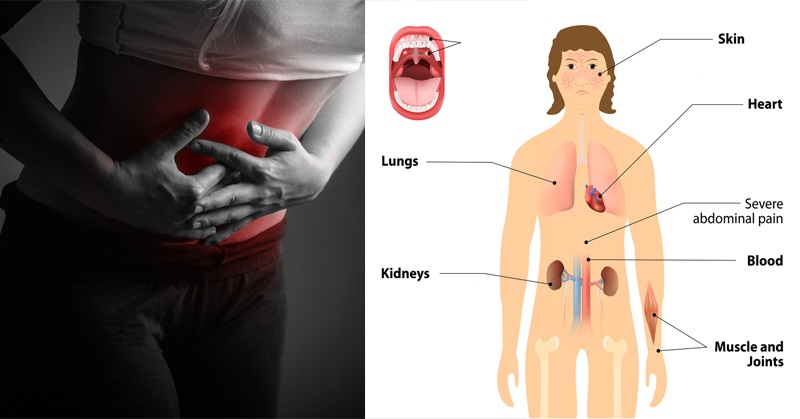Lupus is a chronic autoimmune disease that can damage any part of the body. It occurs when the body’s immune system attacks its own tissues and organs. The immune system is unable to tell the difference between harmful germs and healthy tissues, so it creates autoantibodies that attack and destroy healthy tissue, leading to inflammation and pain in various parts of the body.
The cause of lupus is unknown, but anyone can develop it. Research suggests that genes play an important role, but it’s likely that there are factors that trigger the disease. Scientists believe exposure to the sun, infections and certain medications may trigger lupus. Lupus is not contagious, and it’s not a form of cancer, but it affects an estimated 5 million people throughout the world. At least 1.5 million Americans have lupus, and more than 16,000 new cases are reported across the country each year.
Those suffering from lupus will have episodes when the disease flares up, followed by times of remission where they feel healthy. It’s a continuous cycle, and the disease can range from mild to life-threatening. With proper care, most people with lupus can lead a full life.
Lupus can be difficult to diagnose because its signs and symptoms are often similar to those of other illnesses, and no two cases of lupus are exactly alike. Lupus can affect many different organs, and symptoms are known to come and go, but the most common symptoms are the same for both males and females. The early warning signs of lupus include:
1. Extreme Fatigue
Lupus causes extreme weakness and fatigue, often affecting many joints and muscles. This type of fatigue cannot be remedied by sleep.
2. Painful Joints
One of the most debilitating effects of lupus is pain and weakness in the joints. According to the Lupus Foundation of America, more than 90% of people diagnosed with lupus will experience joint pain.
3. Headaches
Headaches can come about more easily for those suffering with lupus, and they’re often accompanied by nausea and fatigue.
4. Sensitivity to Light
Those with lupus are usually extra sensitive to light — both sunlight and indoor lighting. It can quickly trigger a headache.
5. Hair Loss
Hair loss results from inflammation of the skin and scalp. While some may lose hair by the clump, others will experience hair loss more slowly.
6. Fever
One of the early signs of lupus is a low-grade fever for no reason, usually around 98.5 to 101 degrees Fahrenheit. It’s often a sign of inflammation, infection or a flare-up.
7. Discolored Fingers
Lupus can cause poor circulation in the fingers and toes, leading to discoloration.
8. Swelling
The inflammation running throughout the body can affect almost every organ, muscle and tissue. Those with lupus often experience swelling in different parts of the body.
9. Rash
A lupus rash forms in the shape of a butterfly on the face. It spreads over the bridge of the nose and onto the cheeks, similar to a sunburn.
10. Chest Pain
Pain in the chest can be a result of inflammation in the lungs, diaphragm and blood vessels. Breathing may become labored.
Lupus Management
Prevention methods for lupus are unknown, but if you’re living with lupus, there are ways to help prevent a flare-up. Living a healthy lifestyle by getting plenty of sleep, avoiding stress and sunlight, staying active and not smoking can help you manage lupus symptoms.
Certain medications are often prescribed to those who develop lupus, but many believe that the disease can be treated using a more natural approach. Natural remedies believed to help manage lupus include:
- Massage – beneficial to those with chronic joint and muscle pain due to lupus
- Chiropractic care – improves the mobility of joints to reduce pain
- Yoga – can help those with lupus maintain flexibility and help to alleviate stress
- Meditation – can be used to control pain, reduce stress and promote one’s sense of well-being
- Hydrotherapy – cold and hot compresses can be used for pain relief
Sources:
13 Early Warning Signs of Lupus You Need to Know (and what to do the moment you see them)
http://www.lupus.org/answers/entry/what-is-lupus
http://www.everydayhealth.com/lupus/preventing-flares.aspx
http://www.lupus.org/answers/entry/joint-muscle-pain-in-lupus
http://www.healthline.com/health/lupus-support/lupus-lifestyle-changes
http://www.mayoclinic.org/diseases-conditions/lupus/basics/definition/con-20019676


